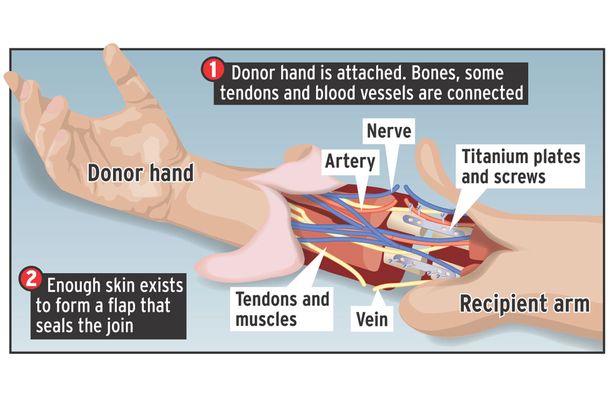Protistic limbs are life-changing technology for those who have lost limbs through various causes. It became clear that there was a lot of focus on protistic legs and technologies to make them as comfortable and life-like as possible. The engineers have managed to design such a personalized model for making the legs, they can alter the types of legs for the different lifestyles and needs of the patients.
Arm and hand protistic seemed to be a lot more complicated due to the nature of hands having such complex sensory and dexterity properties. This got me thinking about how they can improve the technology, with sensors to help with gaining back complete function. While looking online about the research going on into hand and arm protistic, I came across a man who had recently had a double forearm and hand transplant. I was surprised and interested in this, the fact that they can transplant arms from donors and that this works giving patients back the use of hands that they have lost.

In the UK there is a specialist hand transplant team located at Leeds hospital. In a BBC documentary that has just come out called “Saving lives in Leeds”, in episode one they follow a story of a man who has a double hand transplant. In the documentary, the surgeon talks about the complexity of the surgery and the risk of rejection. Organ donors have always been something that I have known about, so many people would give consent for loved ones to donate a kidney or liver, or heart when they pass away but it had never occurred to me that someone would donate their hands.
The intricate nature of the function of the hands is important to maintain when doing a transplant otherwise it isn’t worth it for the patient. In Saving lives in Leeds the head surgeon talks about how they must connect the blood vessels and replace and sew together bones to allow the donor limb to become part of the recipient’s body. The hands regain sensory over a minimum period of 3 years. The nerve regeneration takes up to 6 weeks before patients start getting feeling in their new limb.
In the documentary, the mother of the patient touches on the impact that this will have on her son’s life. The ability to have full functioning hands again, the doors that will re-open for him, and the quality of life he will now be able to have. The significance of someone’s family allowing the donation of hands is also mentioned. Hands are a very personal feature of our bodies and to allow the donation of these to another person does not go unnoticed.
The UK’s first double hand transplant happened in 2016 at Leeds Hospital with a patient called Chris King. The YouTube video below is him talking about his experience of how a double hand transplant has changed his life.
Listening to these peoples’ stories and reading more about how these procedures are done, got me thinking about how I would feel if someone was to ask my permission for my loved one’s hands or if I would want someone to have my own. It is such a life-changing thing that some can do for another, it is like consenting to a kidney, liver, or heart but in some way, it feels a lot more personal. An interesting and thought-provoking transplant that will hopefully inspire more of these life-changing surgeries. It made me think of all the potential for other body parts that might be able to transplant in the future, such as legs, ones we’ve never thought of before.
A very interesting, well-researched blog. There may be more room for some more critical evaluation, for example, what are the possible risks of this surgery? Are they outweighed by the benefits. I also read of a double hand transplant patient where the skin of the transplanted hands started to change colour to match that of the patient which you might also find interesting. Also be careful with your proof-reading: do you mean protistic or prosthetic?